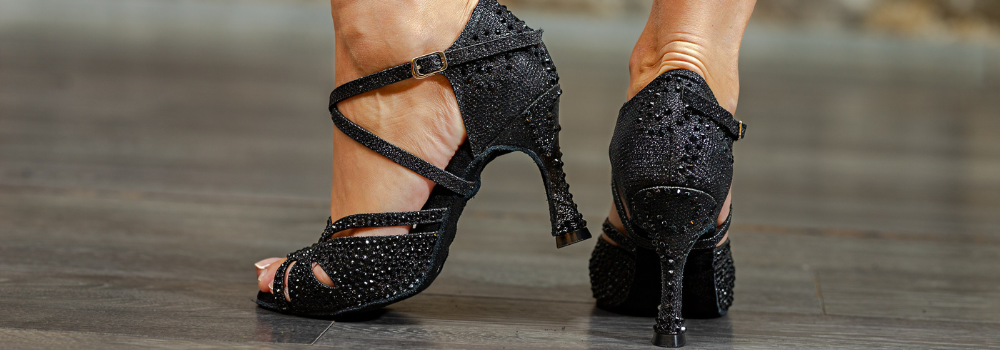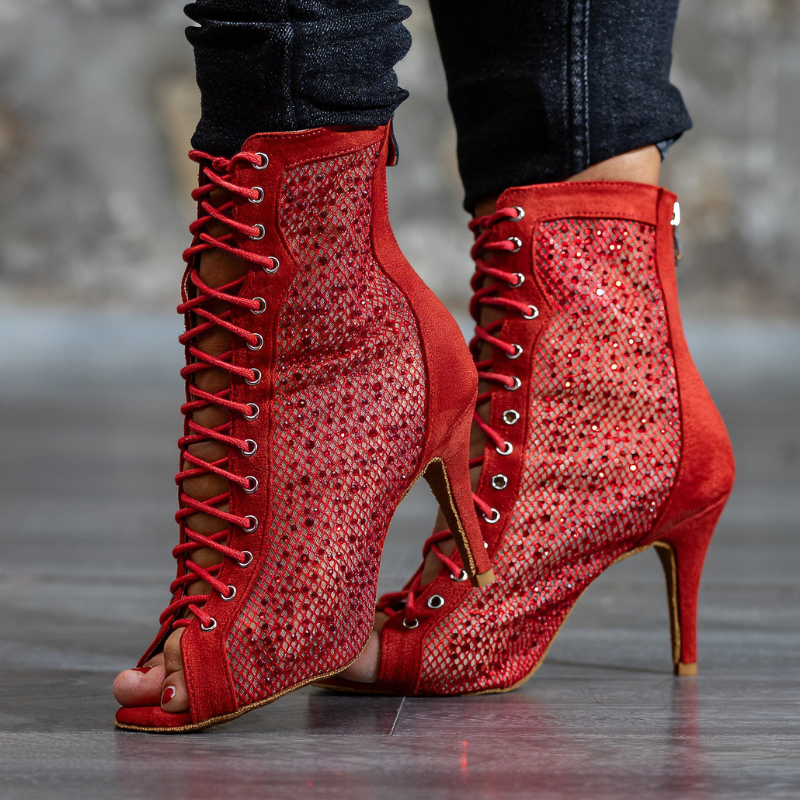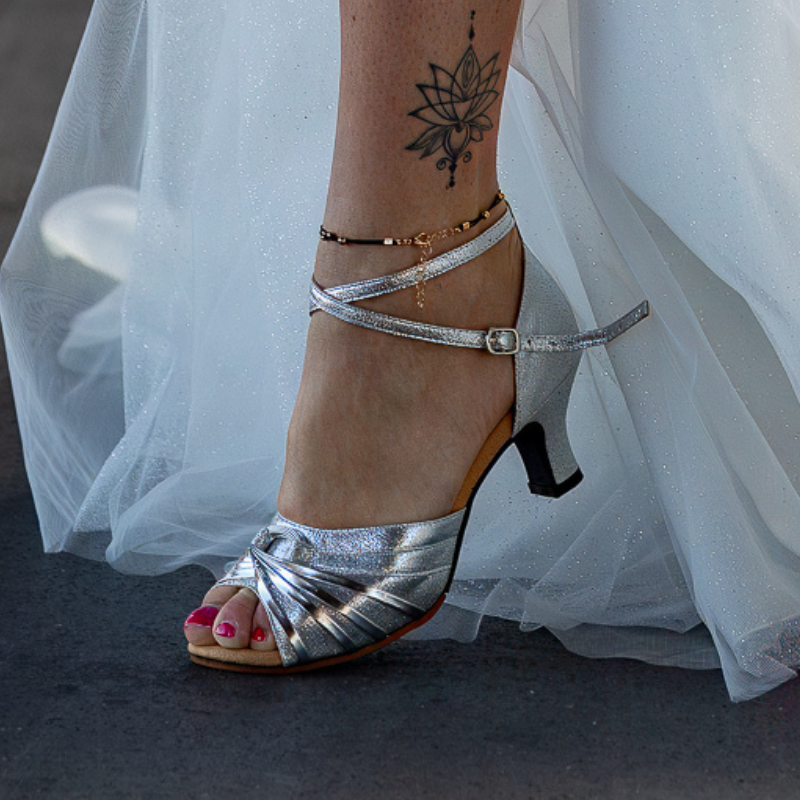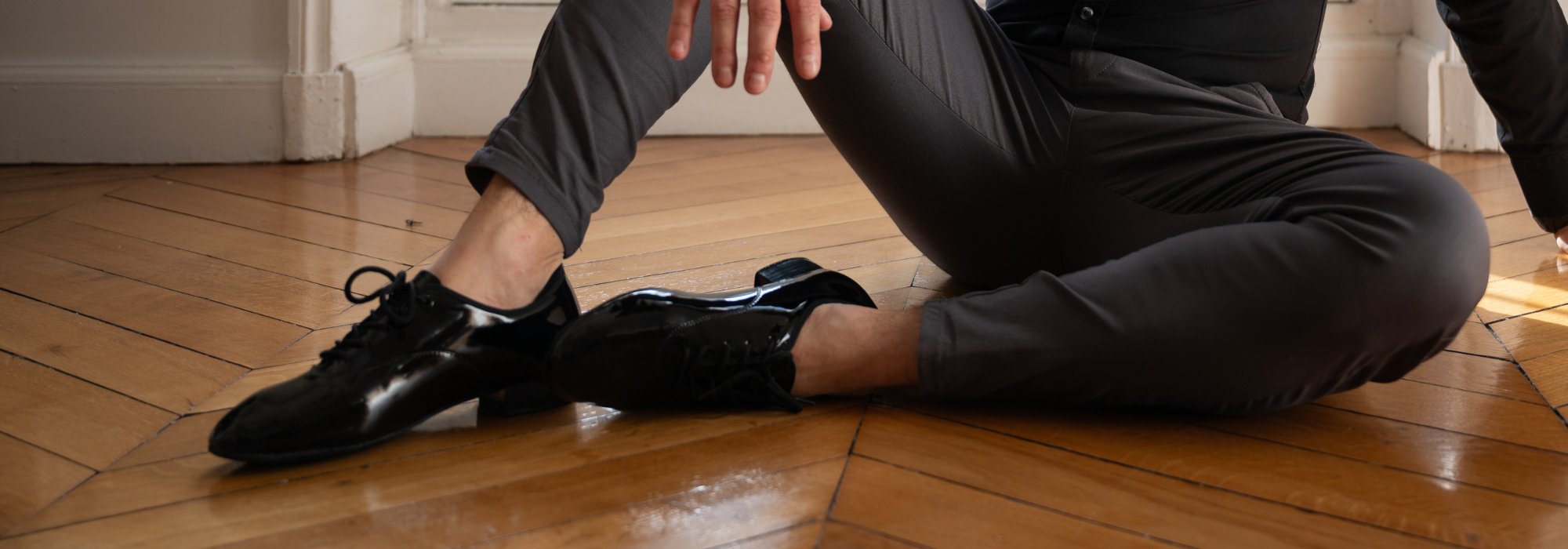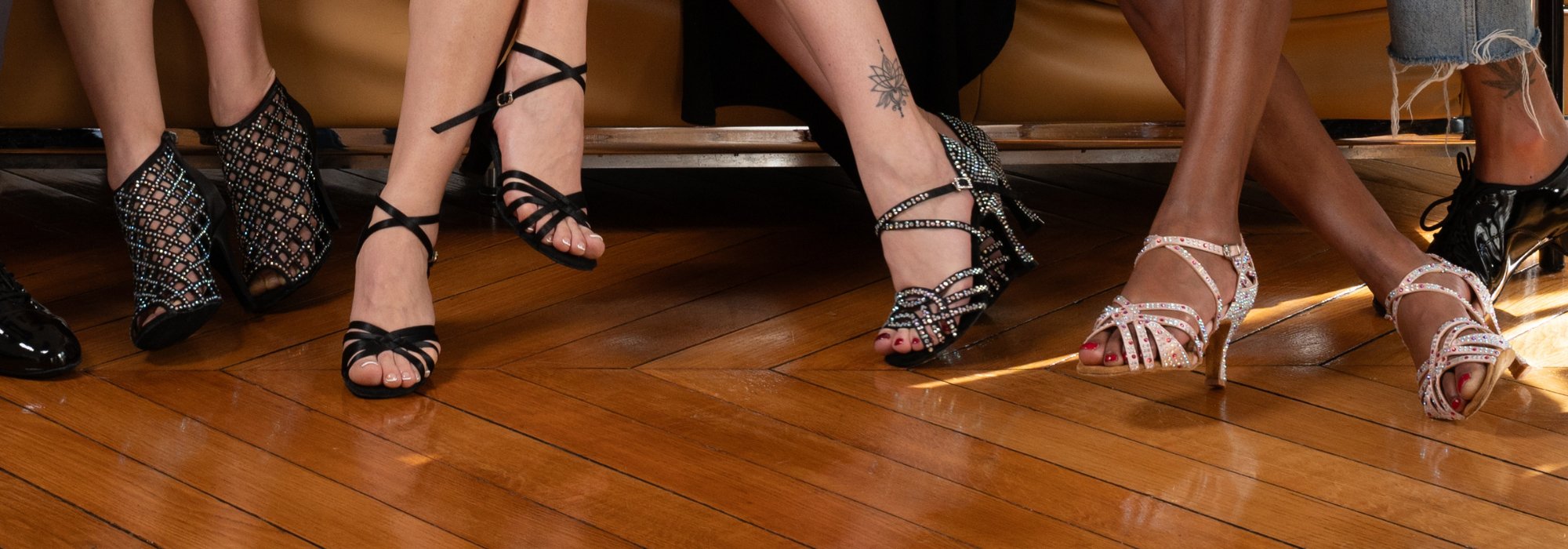How to learn to dance the kizomba?
Do you dream of mastering the sensuality and fluidity of the Kizomba? You don't know where to start to learn this captivating dance?
This guide is there to guide you step by step!
Kizomba is much more than a simple dance: it is a cultural and emotional experience. She is from Angola, and seduced by her slow movements, her bewitching rhythm and the intimate connection she creates between the partners. Whether you are a beginner or a dancer experienced, this discipline is accessible to all.
In this guide, you will discover:
-
What Kizomba really is and why it is unique.
-
The essential bases to start (from posture to fundamental steps).
-
How long will you need to be comfortable on the track.
- Practical advice to progress quickly and fully enjoy your Kizomba evenings.
Ready to enter the world of Kizomba? If so, let's dive into the heart of the matter!
What is Kizomba?
Kizomba, nicknamed the " African Tango "Is a Dance of Angolan origin which was born in the 1980s. Semba (a traditional Angolan dance), and influenced by Rhythms of the Antilles Zouk, she quickly established herself as a very unique style. Today, it is practiced and celebrated worldwide.
Kizomba is a couple dance which is distinguished by:
-
His sensuality : The emphasis is placed on the intimate connection between the partners.
-
Its slow pace : Unlike more dynamic dances like salsa, Kizomba is based on fluid and measured movements.
- His poetic style : His movements make it a graceful walk in which posture and musicality play a central role.
In Kizomba, the dialogue between dancers is essential. The leader guides his partner or his partner through subtle gestures, while the follower interprets the movements with fluidity and elegance.
Why learn Kizomba?
The Kizomba offers much more than a simple technical learning:
-
A cultural trip: To learn about this dance is to plunge into the cultural heritage of Angola and Afro-Caribarian music.
-
A means of expression : Thanks to its slow movements, it makes it possible to transmit emotions through each step.
-
A welcoming community : THE Kizomba lessons Organized in many cities bring together dancers from all backgrounds.

The basics to learn Kizomba
Learn Kizomba is based on Mastery of essential fundamentals which allow you to dance in harmony with a partner and to adapt to music. Before you embark on complex figures, it is crucial to understand the basic principles, both in terms of posture and different movements.
The posture
A good posture is the Base of a fluid and pleasant dance. The connection between the partners is essential, and it is based on their positioning and their bodily attitude:
Rules for the leader (often man) :
-
Maintain constant contact at the bust with the follower.
-
The right arm must slightly wrap the back of the partner or partner, while the left hand holds that of the follower with flexibility.
-
Keep your shoulders parallel and relaxed to ensure clear and pleasant guidance.
For the follower (often the woman) :
-
Position yourself slightly forward to establish a natural connection at the torso.
-
The left hand rests gently on the shoulder or upper back of the leader, and the right hand is placed in his.
- The upper body must remain straight, while the hips remain mobile to accompany the movements.
The two partners must dissociate the upper body, which remains stable, from the lower body, which achieves travel and weight transfers.
Transfer of body weight
THE Transfer of body weight is a Fundamental mechanism in Kizomba. It gives a certain fluidity and elegance to the steps while maintaining the connection with the partner.
-
Each step involves moving the weight on one leg, while the other remains free for the next movement.
-
For example, when the weight is transferred to the left leg, the hip movement naturally accompanies this transfer. This releases the right leg, ready to mark the next step.
- This pendulum between the legs gives the Kizomba its fluid and rhythmic appearance.
Train to feel this transfer by walking slowly on site, then adding lateral or forward trips.
The basic steps in Kizomba
To start, master the basic steps. These are simple but essential to evolve on the track.
Here are three essential movements:
-
The 2 -stroke :
-
Leader : Move your left foot laterally, then bring your right foot back to return to the initial position.
-
Follower : Make the same movement, but start with the right foot.
-
The 3 -stroke on site :
-
Leader : Take a step on site with the left foot, a side step with the right foot, then bring the left foot next to the right.
-
Follower : Start with the right foot and follow the same logic.
-
3 -stroke market :
-
Leader : Advance with the left foot, follow with the right foot, then mark a time by bringing your feet together.
-
Follower : Rack with the right foot, then the left foot, and finally bring the feet together.
Bonus: the “SAUVE” for more sensuality
THE bright is a emblematic movement of Kizomba, often made by the follower. It consists of a undulation of the basin which accompanies the rhythm and adds a sensual dimension to the dance.
How to master it :
-
Work the flexibility of the hips.
-
Flex one leg slightly after the other to create a fluid and natural movement.
-
Keep the upper body immobile to accentuate the contrast to the movements of the basin.
What is the rhythm of the Kizomba?
The rhythm is the heart of the Kizomba. Before even mastering the steps, it is essential to soak up your unique, slow and bewitching rhythm, which guides each movement. Understanding this rhythm is the key to dancing in harmony with music and your partner.
The musical structure of the Kizomba
Kizomba is distinguished by its slow and regular tempo which is characterized by a constant pulsation often defined by bass. In addition, the pace is generally structured in four -stroke cycles, although he can vary depending on the songs.
The main characteristics include:
-
A marked bass : The pulsations of the bass offer a clear and repetitive base which is ideal for synchronizing the steps.
-
Fluid melodies : The mixture of traditional instruments and electronic sounds creates a soft and romantic atmosphere.
-
An adaptable style : Although Kizomba has a stable base, rhythmic variations allow moments of slowing down or acceleration that dancers interpret fluidity.
Listen before dancing
For Dance the kizomba well, start with listen to several songs Without trying to move.
This step is crucial for:
-
Identify the basic pulsations marked by the continuous "boom-boum-boum".
-
Recognize the rhythmic variations that will guide your movements on the track.
-
Familiarize yourself with the shades of each piece, including the transitions and tempo changes.
How to follow the pace?
Once you have identified the musical structure, here is how to synchronize your movements:
-
Locate the bass : Each pulsation, mark a step. This allows you to stay in line with the pace.
-
Adapt your movements to nuances : Some pieces include moments when the melody slows down or accelerates slightly. Slow down your steps or add movements like the sweet to reflect these changes.
-
Live musicality : Try to feel the music with your whole body, moving slightly even out of the dance floor. This will refine your connection with the pace.
Emblematic music for beginners
To train, here are some music perfect for beginners:
- « Rebound Chick » from Nelson Freitas
- « Pakito & Elisa » by Andre Mancini
-
« Asy » from curti ma mi

How long does it take to learn Kizomba?
Learning kizomba Depends on several factors, including your dance experience, your commitment and your regular practice. Although the progression varies from person to person, here is an overview of the elements to take into account to estimate the necessary time.
Factors influencing learning time
-
Your initial dance level :
-
If you are Beginner in dance, It will take more time to master the pace, the connection and the basic steps.
-
If you already practice other dances such as salsa or bachata, you will probably have facilities to integrate guidance and musicality techniques.
-
The frequency of practice :
-
Regular practice (weekly courses, personal training, dancing evenings) significantly accelerates learning.
-
On the other hand, frequent interruptions can slow down your progress.
-
The type of learning :
-
Collective lessons : Offer good immersion and the possibility of dancing with different partners.
-
Private lessons : Allow more targeted and rapid learning thanks to personalized feedback.
-
Personal practice : Watch tutorials online and practice at home strengthens the memorization of movements.
-
Your musical ease :
-
The ability to feel and interpret the rhythm plays a key role in Kizomba. Those who have a good musical ear often progress faster.
Kizomba progression stages
-
Beginner (1 to 3 months) :
-
Learning basic steps: 2 times, 3 times, and 3 times market.
-
Introduction to the posture and transfer of body weight.
-
Connection of connection with the partner.
-
Intermediary (4 to 12 months) :
-
Fluidity in travel.
-
Mastery of simple figures and transitions.
-
Work on musicality and interpretation of rhythmic variations.
-
Advanced (12 months and more) :
-
Adding complex movements such as pivots or accelerations.
-
Development of a personal style with creative variations.
-
Intuitive connection with different partners during evenings.
Tips to accelerate your learning
-
Practice as soon as possible :
-
Take part in dancing evenings to get used to dancing with various partners.
-
Be patient :
-
Do not try to master everything in a few weeks. Learning a dance is based on rehearsal and experience.
-
Vary the experiences :
-
Combine courses, online tutorials and solo practical to solidify your bases.
-
Take pleasure:
-
Kizomba is a sharing dance. The more you appreciate the process, the faster you will progress.
What outfit to dance the kizomba?
Suitable clothing
-
Comfort and freedom of movement : Opt for light and flexible clothes allowing fluid trips.
-
Suggestions :
- Men : Light shirts and adjusted but comfortable pants.
- Women : Dresses or pants offering a good amplitude of motion.
Dance shoes
-
Flexibility and stability : Prefer shoes with smooth soles to facilitate pivots and trips.
-
Options :
-
Beginners : Flat shoes with leather or suede soles.
- Advances : Specific dance shoes with low heels for women and light shoes for men.
>>> Discover our Shoes to dance the kizomba.
Practical advice for beginners
Current errors to avoid
-
Do not neglect the connection : Too much focus on the steps at the expense of harmony with the partner.
-
Posture and rhythm : Hold a correct posture and follow the rhythm to avoid a jerky dance.
Useful resources
-
Video tutorials : Practice at home with courses available on YouTube or specialized platforms.
>>> Book your Free trial lesson in Paris.

Discover the universe of Kizomba today!
That's it, we arrive at the end of this guide, and you now know How to learn to dance the kizomba. If you have been attentive (VE), you normally have the keys to fully enjoy this exceptional dance. You know what Kizomba is, why it is unique, and what steps to follow to master your steps, its posture, and its musicality.
But beyond techniques, dancing kizomba It is also to immerse yourself in a rich culture and share unforgettable moments on the track. Whether you are a beginner or an advanced dancer, each step in your learning is an opportunity to progress while having fun.
SO, Ready to start your Kizomba adventure ?
→ Discover our shoes specially designed to dance the Kizomba And take advantage of optimal comfort to perfect your steps!
→ Book your free trial lesson now To take your first steps with confidence and meet a passionate community.
Do not lose a second, make Kizomba part of your life!

